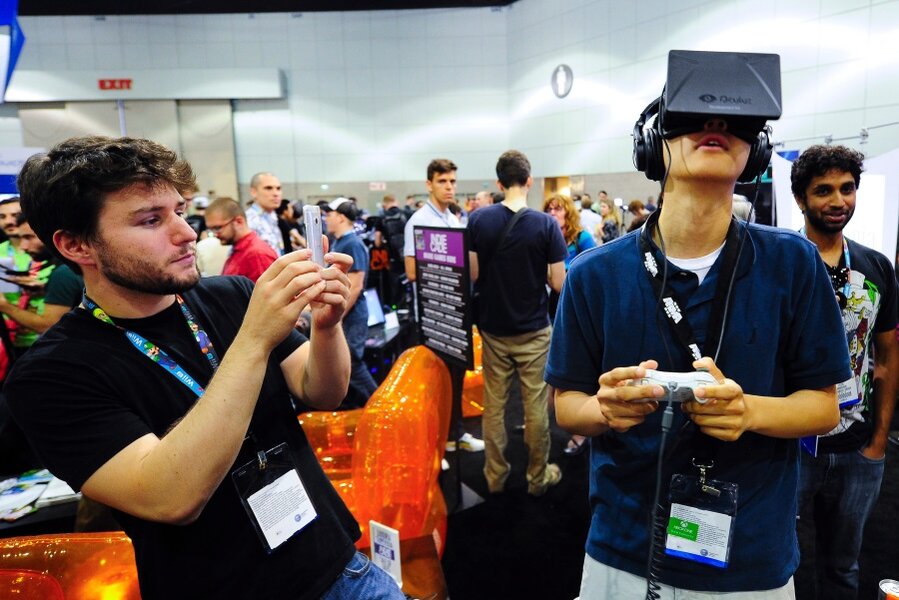Samsung brings 360-degree videos to its virtual reality headset
Loading...
Christmas may have come and gone, but Samsung hasn’t stopped bringing new virtual reality goodies to consumers every week. Each Tuesday since early December, the company has launched new apps for the Gear VR, its customer-friendly virtual reality headset.
This week brought a pretty major addition: Milk VR, an app that allows users to download or stream 360-degree videos to their headsets. The videos can be previewed at Samsung’s website: there are only ten available right now, all travel-themed, but that number will surely rise as Samsung (and others) add content.
Few people have experienced 360-degree video, but those who have say it’s a big step forward. Hayden Dingman, a correspondent for PC World, wrote in September that the videos on the Gear VR filled his field of view, even making him jump when he turned and noticed something in his peripheral vision. Virtual reality headsets, including the Gear VR, can also play conventional videos in a simulated theater environment, but 360-degree video is different: it fills a user’s field of vision, creating the sensation of being immersed.
The Gear VR, which went on sale in limited quantities in December, is the first consumer-friendly virtual reality headset to make it to market. The only competition is the Oculus Rift, which has received lots of buzz this year but is still in development. Oculus VR, the company behind the Rift, was acquired by Facebook in March for $2 billion; and in fact, Oculus made the software on which the Gear VR runs. The Gear VR costs $200 (plus the price of a Samsung Galaxy Note 4 smart phone, which acts as the unit’s display and brains), so it won’t break the bank for most consumers.
Samsung allows people to register to upload videos to the Milk VR service, but the company is being pretty strict about what content is acceptable. (A glut of mediocre content would probably sour people on the idea of watching videos on a VR headset.) The Milk VR page says that videos must be shot in full 360-degree spherical format, and have to be at least 4096x2048 resolution so they don’t look blurry to users. This certainly isn’t the next YouTube -- not many people even have cameras capable of shooting 360-degree video -- but it’s a good way for Samsung to showcase high-quality content and entice developers and early adopters to try out the Gear VR.






